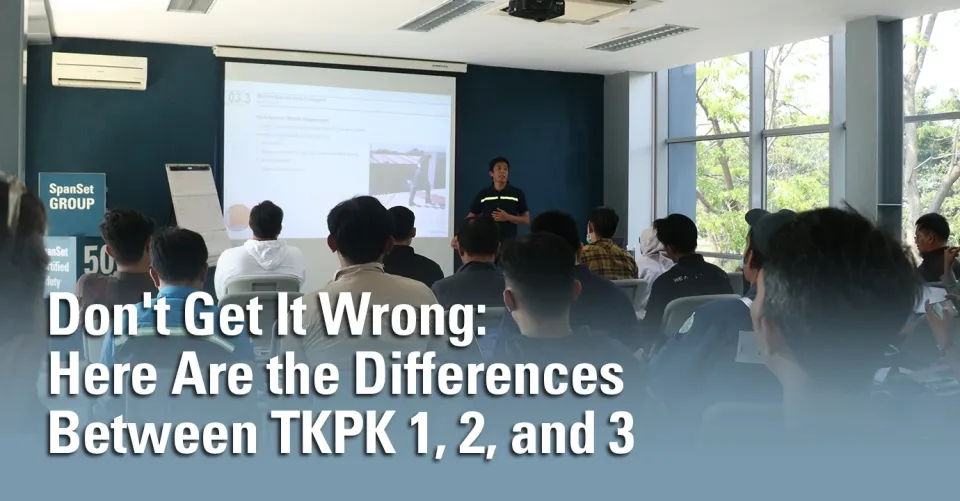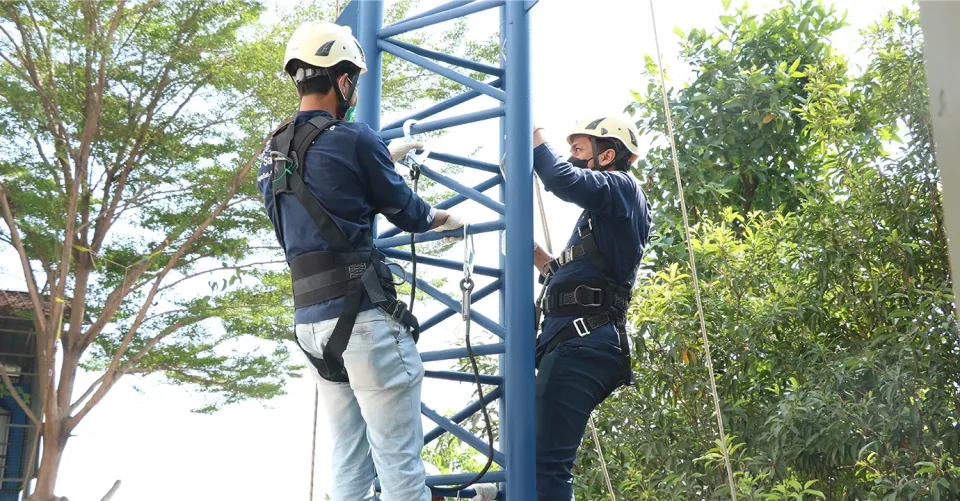
Don’t Get It Wrong: Here’s the Difference Between TKPK 1, 2, and 3
Working at heights carries its own risks, and not all workers are suited for tasks in such environments. Therefore, proper training, certification, and work contracts are essential to ensure both safety and efficiency on the job.
TKPK, or Tenaga Kerja pada Ketinggian (Workers at Heights), is a type of contract commonly used in these high-risk environments. To simplify the management of workers, TKPK is often divided into three categories: TKPK 1, TKPK 2, and TKPK 3.
This article will discuss the differences between TKPK 1, 2, and 3, and explain why choosing the right contract is critical for working at heights.

What is TKPK?
According to the Minister of Manpower Regulation No. 9 of 2016 concerning K3 in Work at Heights Article 38, Workers at heights are workers who are able to work and are authorized to work on Permanent Work Floors, Temporary Work Floors, move towards and leave Permanent Work Floors or Temporary Work Floors horizontally or vertically on building structures, work in sloping positions or workplaces, rope access and/or raise and lower goods with a pulley system or with the help of machine power.
The Difference Between TKPK 1, 2, and 3
The primary differences between TKPK 1, 2, and 3 lie in the level of complexity and the duration of the work being carried out at heights. Below are the distinctions between TKPK 1, 2, and 3 and their application in the working environment.
1. TKPK 1
TKPK 1 is a contract type designed for simpler, short-duration height work. In practice, TKPK 1 workers are responsible for setting up anchors under the supervision of a level 2 or 3 height worker. This ensures that all tasks are performed in accordance with applicable safety standards.
Additionally, workers are expected to be capable of performing basic self-rescue in case of an emergency. Although the tasks may not be overly complex, they still require a solid understanding of safety procedures.
2. TKPK 2
TKPK 2 is reserved for tasks with a higher degree of difficulty compared to TKPK 1. In TKPK 2, workers not only set up anchors independently but are also responsible for supervising TKPK 1 workers in the anchoring process.
This ensures that every step is carried out safely and according to procedure. Furthermore, workers at this level are expected to perform rescue efforts during emergencies, both for themselves and for their team members.
Also see: Is Using a Double Lanyard More Difficult Than a Single Lanyard?
3. TKPK 3
TKPK 3 is the most complex contract type and is typically used for large-scale projects requiring high technical expertise and extended work durations, often over one year.
In TKPK 3, workers are tasked with developing a comprehensive safety plan for working at heights. This includes designing appropriate safety procedures and ensuring that all workers involved adhere to these procedures.
Moreover, TKPK 3 workers perform internal anchor inspections, ensuring that all equipment is in good working order and safe for use. Advanced PPE and strict safety protocols are mandatory in this level of work.
Choosing the Right TKPK for Your Project
By understanding the differences between TKPK 1, 2, and 3, you can select the right workers based on the complexity of your height-related project. Be sure to consider the specific needs of your project to ensure optimal outcomes.
If your project involves working at heights, make sure you choose the right partner. SpanSet offers a complete range of solutions, including personal protective equipment, training, and work support tailored to your
For further consultation about SpanSet Indonesia products and services, please contact us via email at [email protected] or WhatsApp
To find specification detail and prices of SpanSet Indonesia Products, please visit SpanSet Indonesia Marketplace on Tokopedia and Shopee.